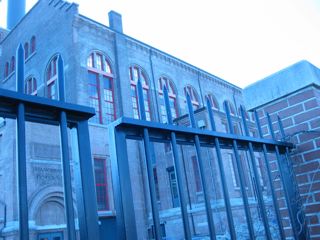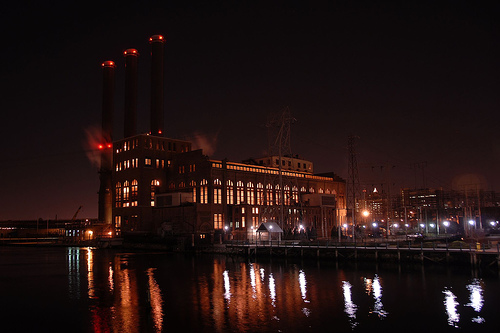Jutting out of the skyline along the harbor, the Manchester Street Station appears dark, imposing, emblematic of the grit and shadows that make up popular imaginings of all that is industrial. And yet, its essential function is to provide electricity to the city of Providence; the patch of darkness that is the station brings light to countless other locations.

In the case of Manchester Street, form and function – though contradictory in an aesthetic sense – are utterly inseparable. The form of the station tells you exactly what it is; down to the trademark pulsing red lights that appear at the tops of the stacks at nighttime, there can be no mistaking that the raw materials of the structure would be meaningless without its purpose of producing electricity.

Image from flickr.com user aDeparture
Bernard Tschumi conceives of an “event-place” as a place that can’t be separated from what occurs there, and while that term applies to spaces – like battlefields, for example – that are significant because of one very specific event, it also seems to apply to a continually active space like Manchester Street. Not only does the station appear the way it does because of what it does, but its function also colors the associations that the people who see it make. In class, we wondered how time ties into the event-place; at Manchester Street, did the different significances of the event of electrical production at different times in the station’s history alter the place that the building enacted? If electricity is commonplace to us now and was once novel, then how does the event-place that Manchester Street occupies today compare to the ones it has occupied in the past?
Back to Hannah Sheldon-Dean's Project: The Manchester Street Generating Station
